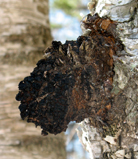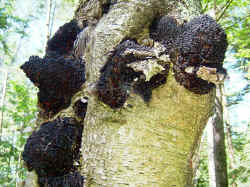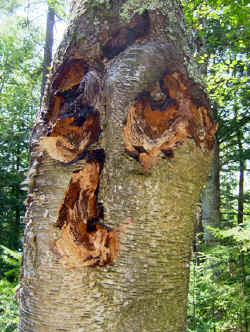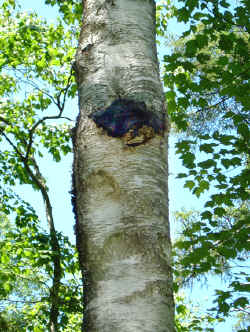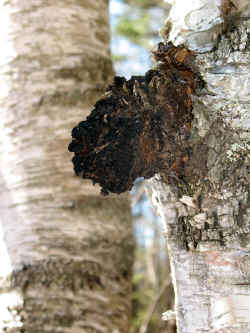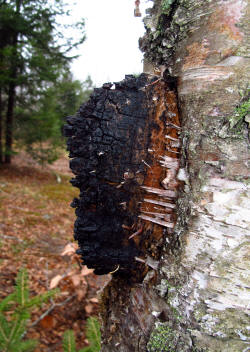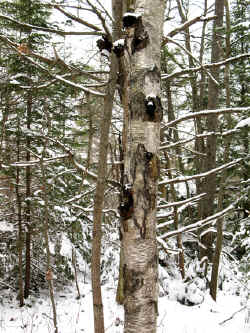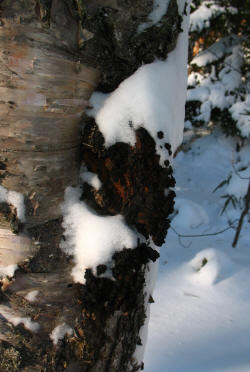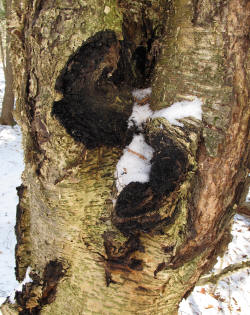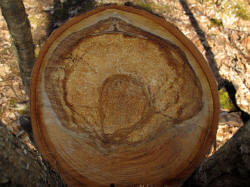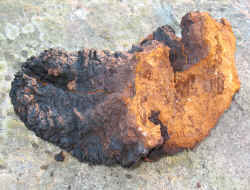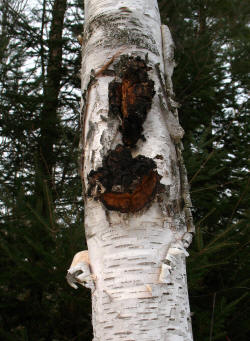|
|
Mushroom-Collecting.com A New England and Eastern Canada Edible and Medicinal Mushroom Resource |
|
Home
Chanterelle (Cantharellus cibarius) Black Trumpet (Craterellus cornucopioides, C. cenerius, C. foetidus) Small Chanterelles (Craterellus tubaeformis, C. ignicolor) Hedgehog (Hydnum repandum, H. umbilicatum) Horse and Meadow Mushroom (Agaricus arvensis, A campestris) Parasol Mushroom (Macrolepiota procera) Shaggy Mane (Coprinus comatus) (White) Matsutake (Tricholoma magnivelare) Blewit (Lepista nuda) Oyster Mushroom (Pleurotus ostreatus, P. populinus)
King Bolete (Boletus edulis) Boletus variipes and other. Two Colored Bolete (Boletus bicolor) Maitake (Grifola frondosa) Chicken of the Woods (Laetiporus sulphureus) Dryads Saddle (Polyporus squamosus)
Morels (Morchella esculenta, M. elata) Puffballs (Calvatia gigantea, Calvatia cyathiformis, others) Lobster Mushroom (Hypomyces lactifluorum) Aborted Entoloma (Entoloma abortivum)
Medicinal Mushrooms Maitake (Grifola frondosa) Reishi (Ganoderma tsugae, G. lucidum) Turkey Tail (Trametes versicolor) Chaga (Inonotus obliquus) Artist's Conk (Ganoderma applanatum)
Collecting, Photographing and
Cooking Collecting
Tips Evaluating
Flavor Dyeing Fabrics and Paper with Mushrooms
|
Chaga
Chaga, also known as
clinker polypore, is not immediately recognized as a fungus by many
people. Recently a person commented to me that they had seen them before
but thought they were a bug infestation. Rather than being mushroom-like
it is a large black canker. It is dense, very hard and deeply cracked on
the surface resembling something that has been burned. Sometimes hints of
the yellow interior can be seen. It often gets it's start on a scarred
birch. Flesh:
The interior is yellow to yellow brown often with some bits of white mixed
in and is moderately hard with a somewhat pebbly, corky texture. The
outer surface is dark brown to black, very hard, with a deeply cracked
texture. It can be brittle with pieces easily rubbing or falling off. When
and where to find them: (ecology) Chaga can be found all year round
since it persists on the tree for many years. It is most always found on
yellow, or white birch. It's probably possible to find it on gray birch
but gray birch is more likely to be infected with Piptoporus betulina, the
birch polypore. Since gray and white birch occasionally hybridize in this
area, exact identification of the tree can be difficult. They have been
reported to grow on hardwoods such as beech or hornbeam but I have never
found one on anything but birch. Current information suggests that chaga
found on birch has the best medicinal qualities. Chaga can be easier to
find in the winter because birches will be easier to spot and because the
chaga may grow high on the tree where the greenery may obscure them during
the warmer months. A hatchet or axe is usually required for removal. A
hammer can also be effective in some cases. Chaga
can be easier to remove when frozen. Scarred trees created by excavating
or skidding logs during lumber harvesting can develop chaga. Older trees
are more likely candidates although they can be found on middle aged trees
as well. Preparation:
Chaga is usually prepared as a tea or tincture. As always try a small
amount at first. If you have health issues or take
medication there is a possibility of interaction. Check with your doctor. Tea
can be made from fresh cut chaga but it is more often dried first. It must
be chopped or broken up into smaller pieces for drying unless the pieces are small.
A hatchet or hammer is best but you may want to do it in a box because
pieces can fly. A bench vise will work well.
Drying at 110-125 degrees Fahrenheit is recommended. Dry it for at least
24 hours then remove it for a few days so any remaining interior moisture
will stabilize. Then dry it again for another 24 hours or until it is bone
dry. I have successfully dried chaga by placing it on top of my water
heater. It takes longer but saves on energy bills. A warm attic also
works well. It can then be ground for use with a meat grinder or grist mill. It
can be further ground in a heavy-duty blender to make it finer. Steeping
ground or powdered chaga in the normal way makes a pleasant tea. For the
best medicinal benefit there is evidence that decocting it by boiling for
at least 15 minutes and up to 2 hours is best. In either case, the tea is surprising good with a
more tea-like than mushroom flavor because of its tannic qualities. It
brews up darker than you would expect and blends very successfully with
other teas and spices. As far as mushroom teas go, it is
"choice". I
have recently brewed India pale ale using chaga as a replacement for
boiling hops. It was exceptionally successful. I
decocted (long hard boiling) chaga powder in a separate pot, adding it
to the wort at the end. I found it
extremely good with itís tannic qualities also adding a positive note to
the brew. Chaga aleís character was very different from the brew I made
with the same recipe substituting reishi (Ganoderma tsugae) as the hop
replacement. I will definitely make chaga ale again soon. A
tincture of chaga can be made using alcohol and water. That makes 80 or
100 proof vodka a good choice for making the tincture. Fill up a container
such as a bottle or jar at least 1/2 with chaga powder then fill it to the
top with the vodka and allow it to sit for a few days or up to 2 weeks.
Strain off the liquid and run it through an unbleached coffee filter then
squeeze the filter when it has stopped dripping. That yields a
"single extraction". You may take the leftover single extracted
chaga mash (marc) and boil (decoct) in water.
Reduce the liquid by half and add it to your first extraction making a
stronger "double extraction" maintaining an alcohol
concentration of at least 25%. Chris Hobbs' book Medicinal
Mushrooms: An Exploration of Tradition, Healing, & Culture (Herbs and
Health Series) covers this in detail. Comments:
Chaga has been used as a tonic and tea by the Siberians for hundreds of
years. Chaga contains inotodiol, betulin, and active polysaccharides
that have various medicinal implications. A preparation called Befungin
has been used in Russia for cancer treatment since the 1960s. I was
surprised to see that you can buy Befungin on eBay. Chaga
can be used for dyeing textiles or paper and will yield a yellow or sepia
color depending on what mordant or modifier is used. It can also be used
as tinder for fires and as incense. Dried chaga does burn well but the
incense is not particularly fragrant. Find more information here: Inonotus obliquus at Roger's Mushrooms
If you like my photography, I have products like tee
shirts, aprons, coffee cups, and other items
available here
Use of this site will constitute your acceptance of the disclaimer. Copyright 2013 Mushroom-Collecting.com. All rights reserved. |
